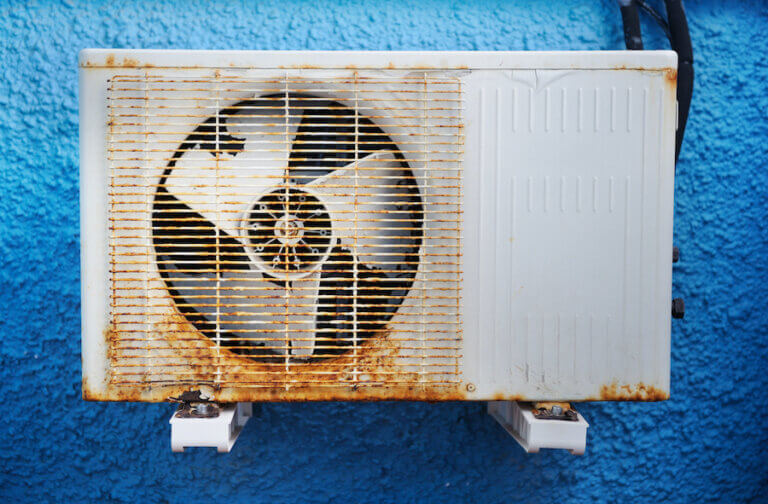As the temperature drops, you need to have enough oil in your home’s oil tank. The easiest way to avoid a critical shortage of heating oil is to monitor the amount in the tank regularly. You can do this by checking the level gauge on your oil tank or by manually checking the oil level with a gauge stick.
A typical domestic heating oil tank holds 275 gallons of fuel. Just like the oil tank in your car, the oil tank gauge does not show how many gallons are left in the tank. Instead, it shows what percentage of your heating oil tank is full. But what happens when the oil gauge fails to work? How can you accurately measure the oil level?
Of course, you can check and log the oil level manually, but it’s more convenient to use an oil tank gauge. The more you know about your oil tank gauge, the easier it will be for you to detect a problem with it.
How Does the Oil Tank Gauge Work?
In every domestic oil tank, there is an oil level indicator. This device shows the oil level in the tank, not its quantity. To determine the exact amount of oil in your tank, you can use either an electronic or a manual gauge. Most gauges measure at eight- or quarter-inch intervals, but some can measure in other ways.
How to Recognize a Broken Oil Tank Gauge
There are many causes for the malfunction of an oil tank gauge. In the case of an oil leak, the accumulation of oil can cause your gauge to stop measuring properly. Older gauges may stop working due to corrosion or natural rust that forms over time. If your gauge stops functioning properly, you will need to either repair or replace it.
One of the best ways to check your oil level is to take a reading the day you fill your tank. Keep in mind that when you first fill an oil tank, the gauge often reads only 75 percent, not 100 percent.
Another option is to manually check the tank gauge. To do this, you must first locate the oil tank gauge. It is usually made of clear glass or plastic and is located on top of the tank. The gauge resembles a measuring cup in that it is often spherical and has numbers on the side. The gauge also has a red float that indicates how much fuel is left in the tank.
Turn the outer housing counterclockwise and remove it by hand to check that the gauge is operating properly. Do not use excessive force when doing this so as not to destroy the protective cover. After removing the cover, visually inspect it for any damage. If necessary, purchase and install a new cover.
Now gently push the floating marker down. If it returns to its previous position, everything is working as it should. However, you should have your meter repaired or replaced if the float does not come back up or is stuck.
What Happens When an Oil Tank Gauge Breaks?
A broken oil tank gauge can’t only be a nuisance, but also dangerous to your home, the environment, and your finances.
If you can’t monitor your oil level, you run the risk of running out of heating fuel. In cold weather, this situation can be inconvenient or even dangerous. Another possibility with an empty tank is condensation. Rust, bacterial growth, and other problems that could affect your tank and heating source can be caused by condensation.
In addition, you may overfill your tank if you don’t know how much oil is inside. Such a mistake is also costly because you’re paying for fuel that isn’t heating your home but ending up on the ground. Install an overfill alarm or automatic shut-off system to prevent overfilling.
How to Manually Check the Level of Your Heating Oil
Manual tank gauging is a method of finding leaks in tanks with a capacity of 2,000 gallons or less. The clear gauge shows how much oil is in the tank. But the reading is not always accurate. The gauge can jam, break or become so dirty from years of oil wear that an accurate reading is difficult.
The first step in manual tank gauging is to obtain a gauge stick. It may also be referred to as a “tank stick” or “dipstick” The best dipsticks are varnished for the most accurate readings; however, many people still use a wooden or metal dipstick. A varnished rod limits the spread of oil on the stick. Make sure the stick you choose is straight and not bent or warped.
Follow these steps to manually measure the volume of your oil tank with a dipstick: Remove the top fill valve cap from the tank by turning it counterclockwise. Carefully lower the rod until it touches the bottom of the tank. Pull the rod out of the tank and read the oil depth to the nearest eighth of an inch. Record the reading in your manual tank gauge log. Clean the dipstick with a dry cloth. Lower it into the tank again, take another reading and write it down. Remember to close the top fill valve cap to prevent leaks. Repeat the manual tank measurement every week, and check the data.
First, you will need to convert the inches displayed on your gauge to gallons. You can do this by using a gasoline-oil tank chart. Determine the size of your tank and compare it to the inches on your measurement. To determine how much space is left, subtract the total number of gallons in the tank from the oil tank’s size capacity.
Need Help?
Contact Bucks County Fuel now to arrange a tank examination if you have any problems with your oil tank gauge. An expert tank inspection will give you a solid understanding of the condition of the gauge and the tank itself and help you identify problems before they arise.




